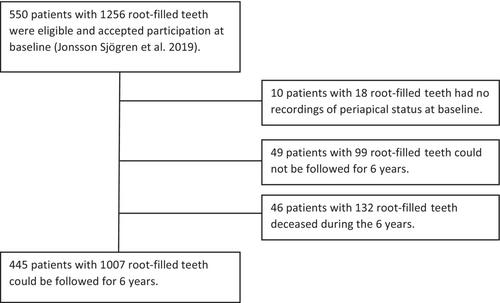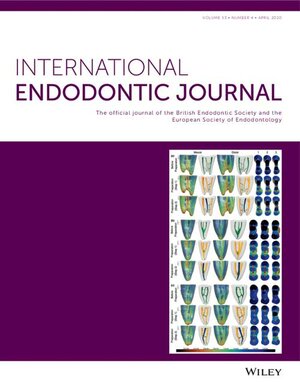Interventions in root-filled teeth identified in general dental practice: A 6-year longitudinal observational study
Abstract
Aim
To investigate what happens to cross-sectionally identified root-filled teeth over a 6-year period, regardless of the time that elapsed since primary root canal treatment, in a cohort of adult patients regularly attending a Public Dental Service. A secondary aim was to investigate how the cumulative events affecting root-filled teeth over the same time were associated with variables obtained from a baseline examination.
Methodology
Adult patients with ≥1 previously root-filled tooth and regularly attending the Public Dental Service in Örebro County were enrolled for study participation in 2015. General dental practitioners examined all identified root-filled teeth in this cohort at baseline using a standardized protocol and were also responsible for further decision-making and treatments. After six years, information on events of the root-filled teeth was collected from dental records. The highest rating (most invasive treatment) on a 5-point ordinal scale was used in the analyses. Regression analyses with stepwise selection were performed for associations between patient- and tooth-related factors and events.
Results
A total of 445 patients with 1007 root-filled teeth were followed the entire observation time. Twenty (2.0%) of the root-filled teeth had endodontic retreatment and 150 (14.9%) were extracted over six years. Among teeth with periapical radiolucency or pain, the majority did not undergo retreatment or extraction; however, the multivariate analysis demonstrated that retreatment or extraction was associated with baseline recordings of teeth with periapical radiolucency (p < .0001), tenderness to percussion (p < .0001), and poor coronal restoration (p < .0001).
Conclusions
This study corroborates the notion that in general dentistry, root-filled teeth with radiological signs of apical disease often remain untreated over time. Furthermore, it also reveals that root-filled teeth presenting with mild pain do not necessarily receive any intervention. However, teeth with baseline signs of apical periodontitis, pain, or inadequate coronal restoration were more likely to have received intervention during the six-year period.


 求助内容:
求助内容: 应助结果提醒方式:
应助结果提醒方式:


